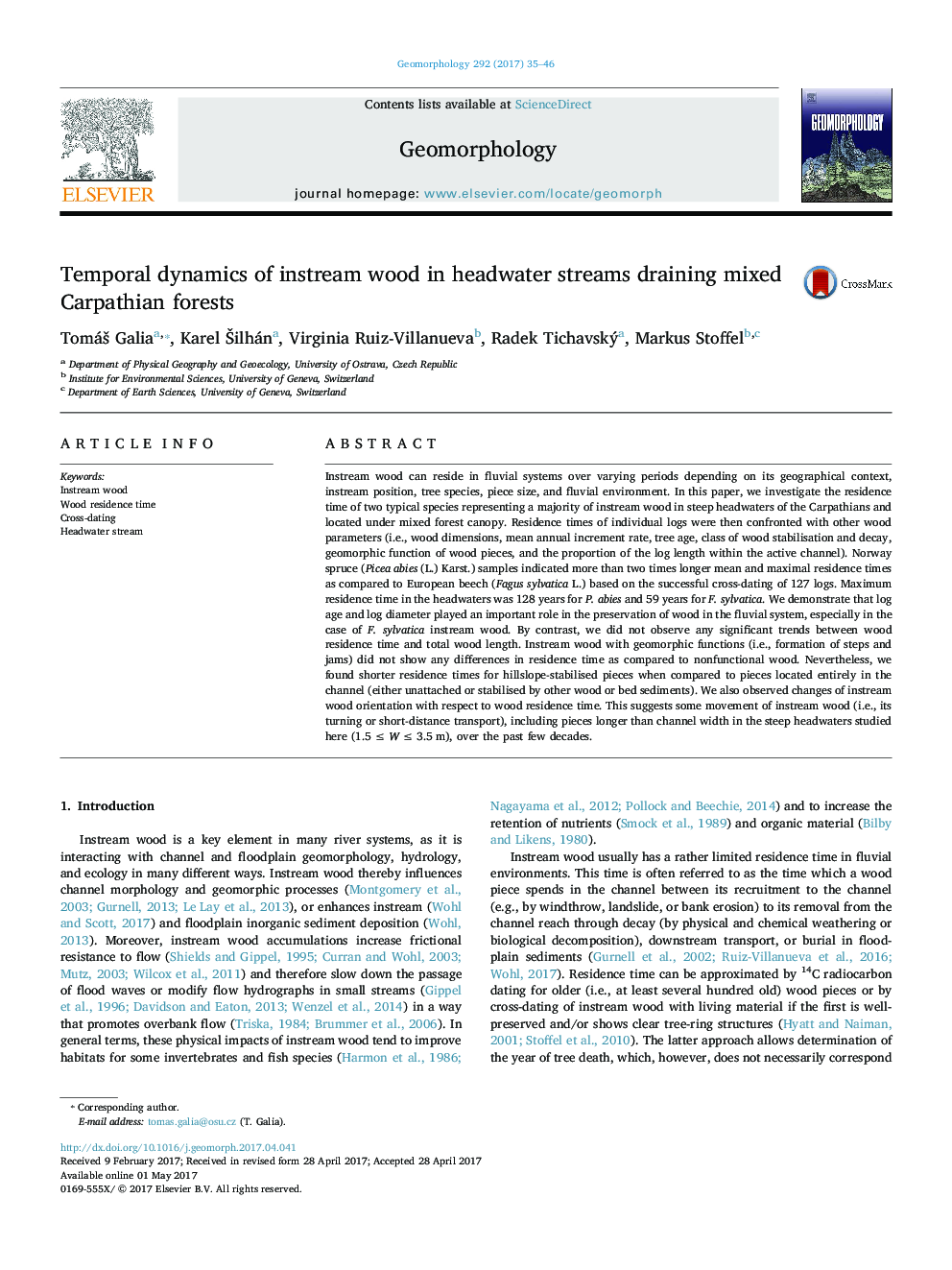| Article ID | Journal | Published Year | Pages | File Type |
|---|---|---|---|---|
| 5780882 | Geomorphology | 2017 | 12 Pages |
Abstract
Instream wood can reside in fluvial systems over varying periods depending on its geographical context, instream position, tree species, piece size, and fluvial environment. In this paper, we investigate the residence time of two typical species representing a majority of instream wood in steep headwaters of the Carpathians and located under mixed forest canopy. Residence times of individual logs were then confronted with other wood parameters (i.e., wood dimensions, mean annual increment rate, tree age, class of wood stabilisation and decay, geomorphic function of wood pieces, and the proportion of the log length within the active channel). Norway spruce (Picea abies (L.) Karst.) samples indicated more than two times longer mean and maximal residence times as compared to European beech (Fagus sylvatica L.) based on the successful cross-dating of 127 logs. Maximum residence time in the headwaters was 128 years for P. abies and 59 years for F. sylvatica. We demonstrate that log age and log diameter played an important role in the preservation of wood in the fluvial system, especially in the case of F. sylvatica instream wood. By contrast, we did not observe any significant trends between wood residence time and total wood length. Instream wood with geomorphic functions (i.e., formation of steps and jams) did not show any differences in residence time as compared to nonfunctional wood. Nevertheless, we found shorter residence times for hillslope-stabilised pieces when compared to pieces located entirely in the channel (either unattached or stabilised by other wood or bed sediments). We also observed changes of instream wood orientation with respect to wood residence time. This suggests some movement of instream wood (i.e., its turning or short-distance transport), including pieces longer than channel width in the steep headwaters studied here (1.5 â¤Â W â¤Â 3.5 m), over the past few decades.
Related Topics
Physical Sciences and Engineering
Earth and Planetary Sciences
Earth-Surface Processes
Authors
TomáÅ¡ Galia, Karel Å ilhán, Virginia Ruiz-Villanueva, Radek Tichavský, Markus Stoffel,
